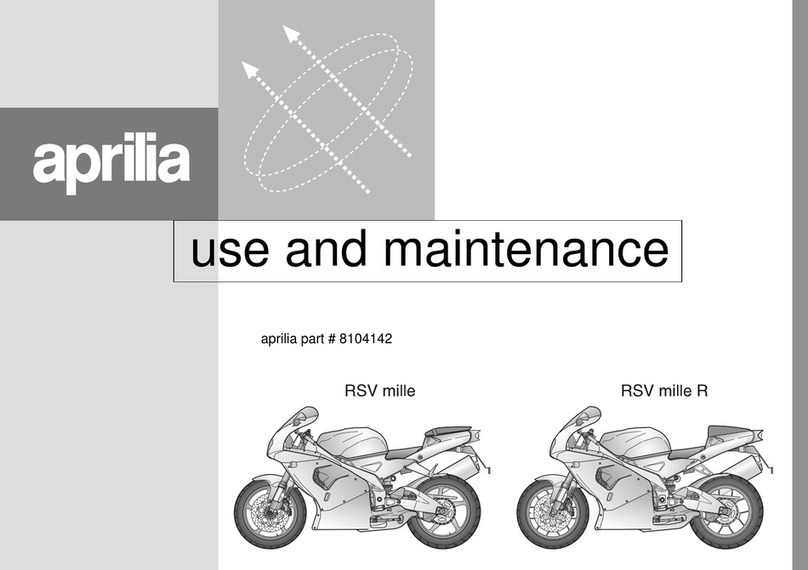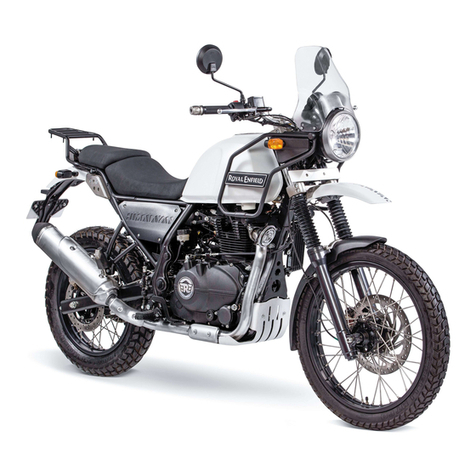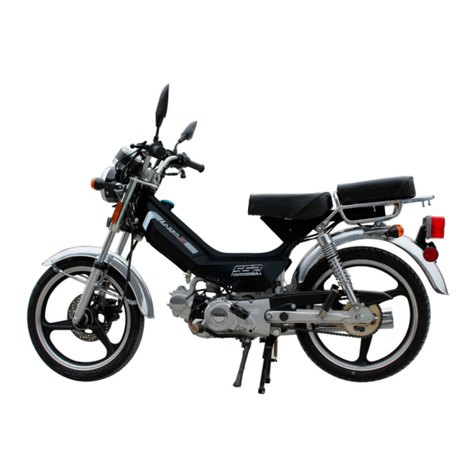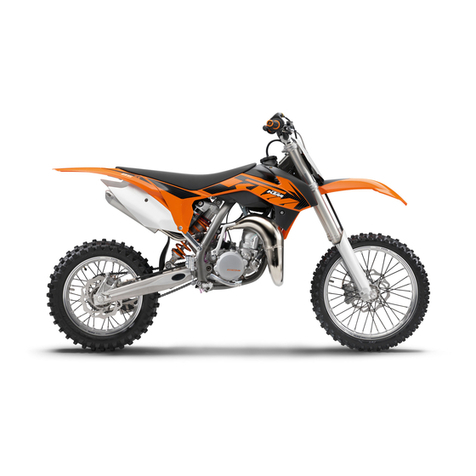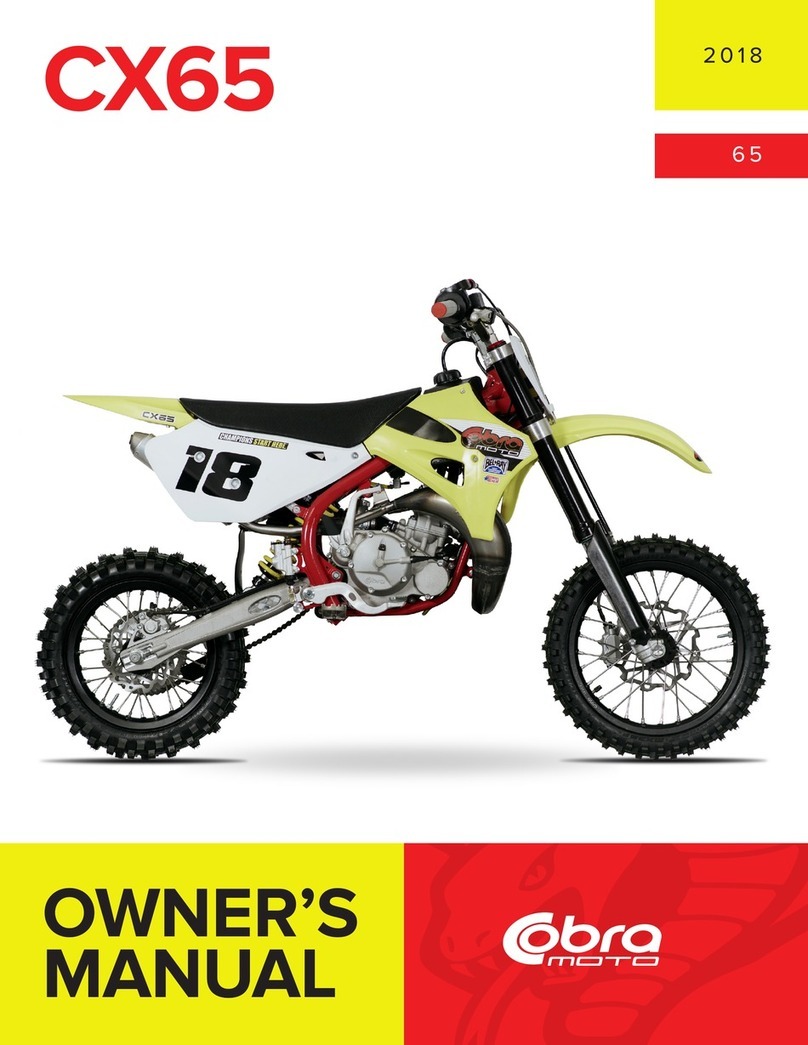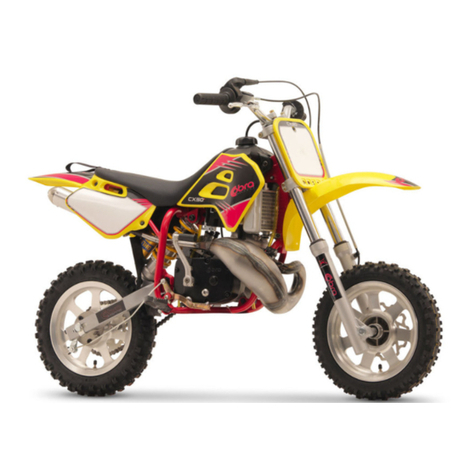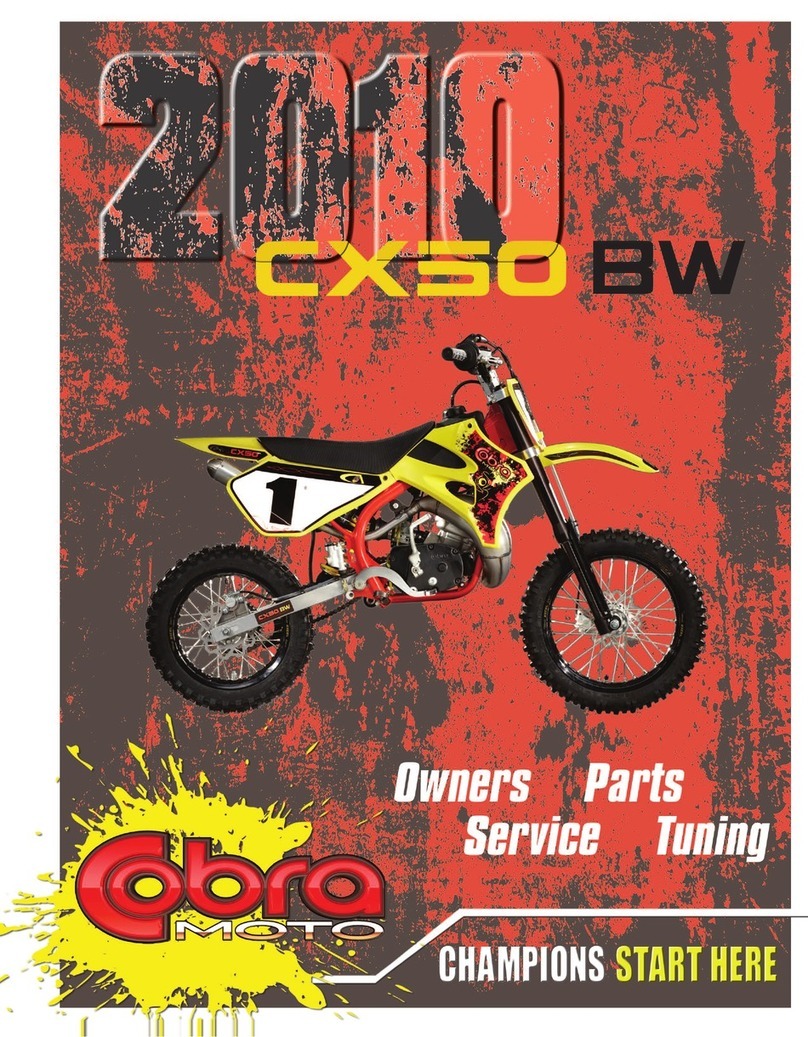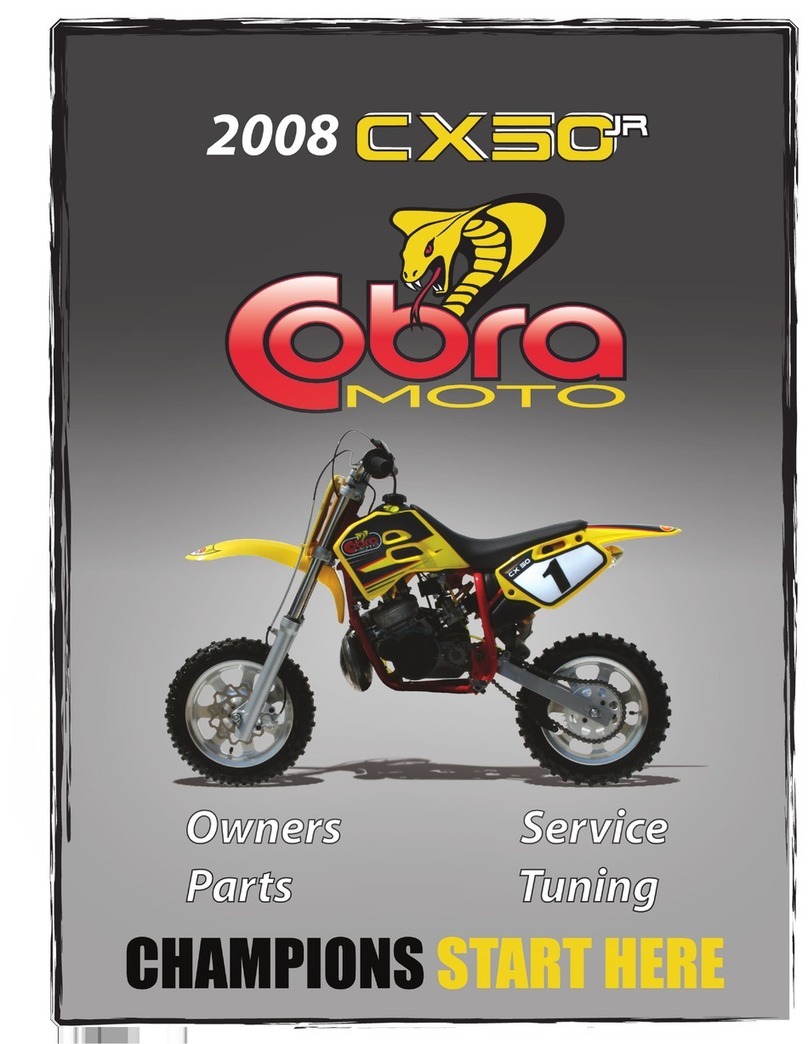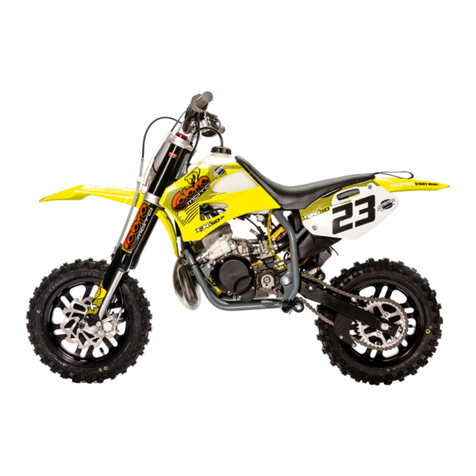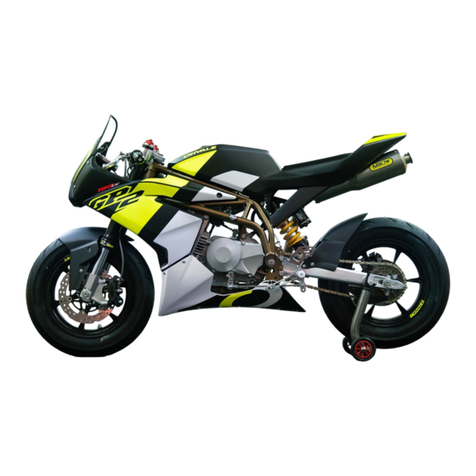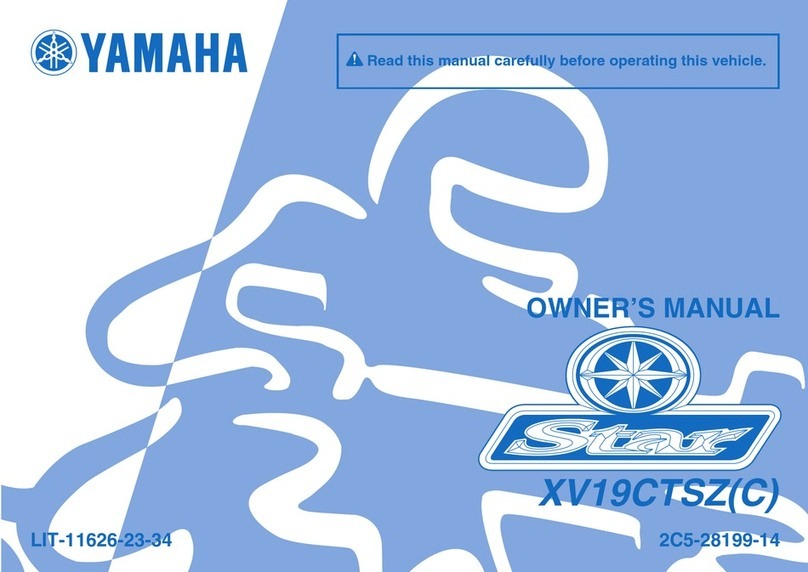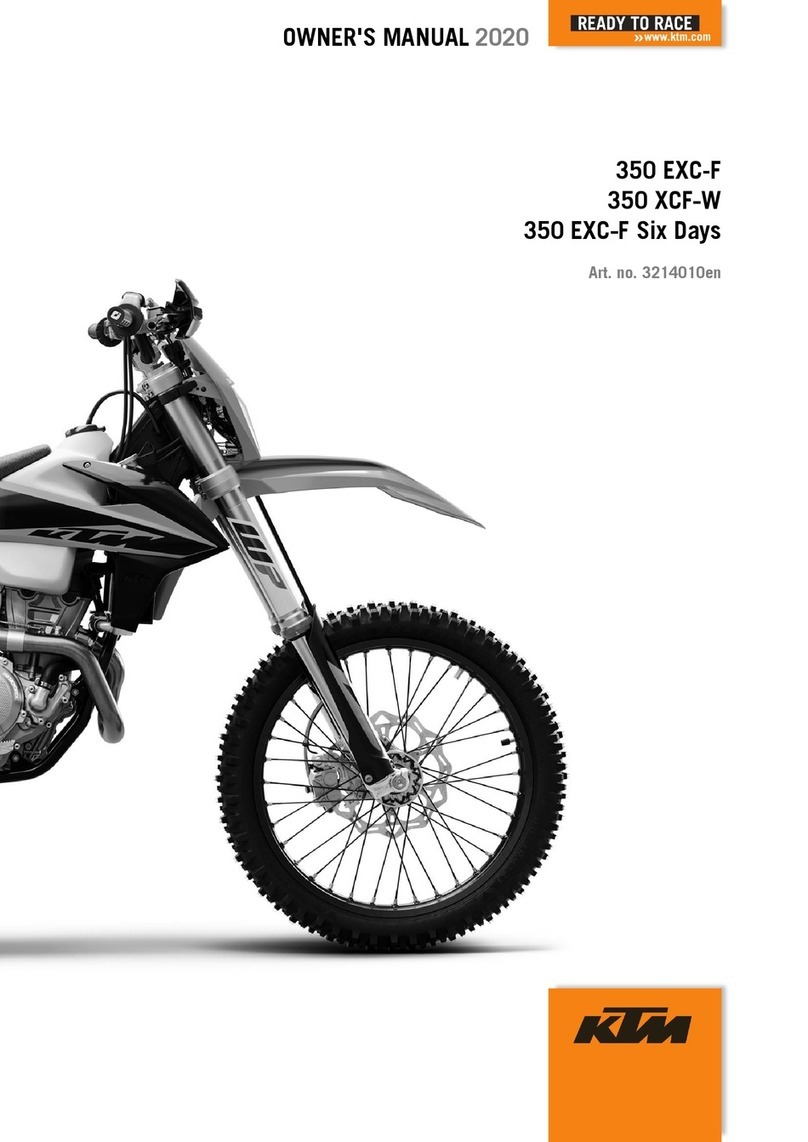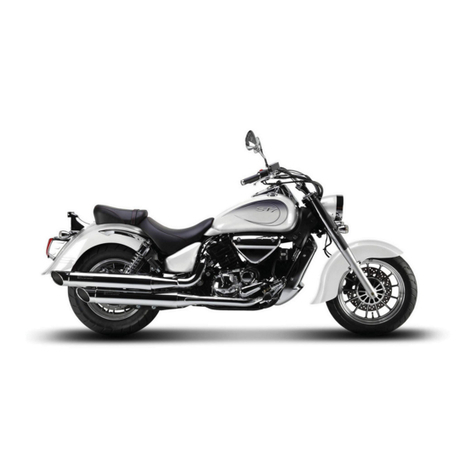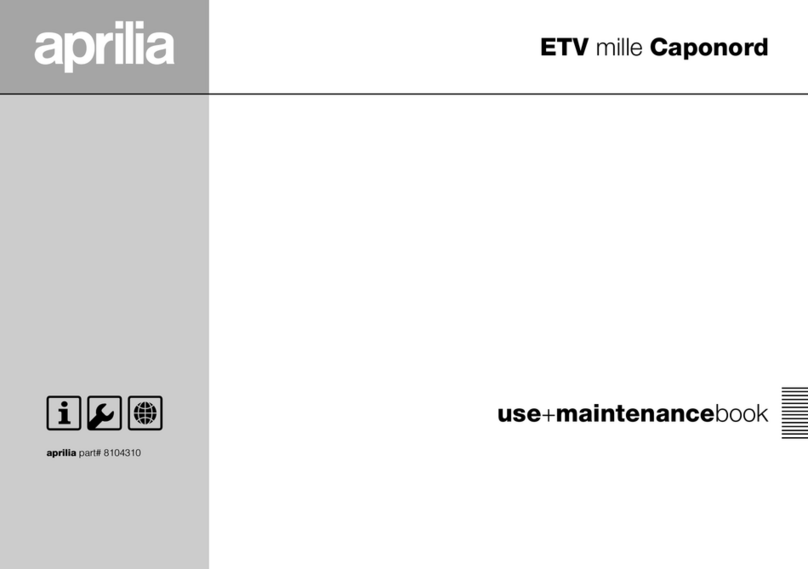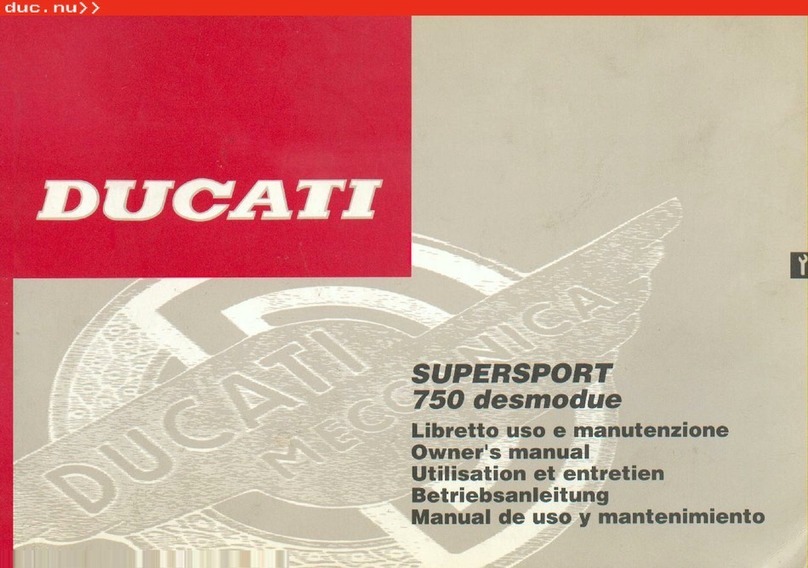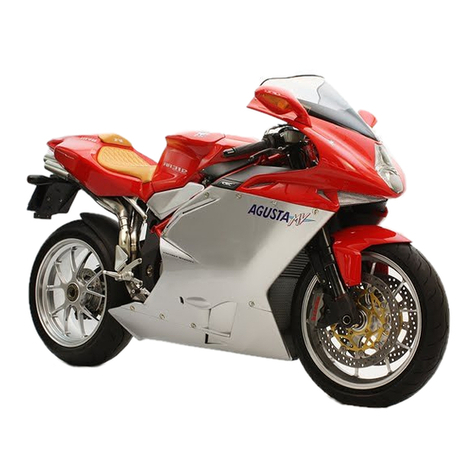
2
Table of Contents
GENERAL INFORMATION ..................................................................................................... 4
SPECIFICATIONS - GENERAL ........................................................................................................................ 4
OPTIONAL SUSPENSION COMPONENTS ........................................................................................................ 5
SPECIFICATIONS - TORQUE VALUES ............................................................................................................ 6
BREAK-IN PROCEDURE ............................................................................................................................... 8
STARTING PROCEDURE ............................................................................................................................... 9
MAINTENANCE ....................................................................................................................... 10
TIPS ......................................................................................................................................................... 10
SCHEDULE ............................................................................................................................................... 11
REPLACING TRANSMISSION / CLUTCH LUBRICANT ...................................................................................... 12
PROPER CHAIN ADJUSTMENT .................................................................................................................... 13
REAR BRAKE MAINTENANCE ..................................................................................................................... 14
FORK MAINTENANCE................................................................................................................................. 16
Fork Air Bleeding................................................................................................................................ 16
Fork Oil Replacement ........................................................................................................................ 17
DISASSEMBLY PROCEDURE ....................................................................................................................... 17
FRICTIONAL DRIVE (V3 CFD) .................................................................................................................... 18
PARTS – AIRBOX & INLET SYSTEM ............................................................................................................. 20
PARTS – BARS AND CONTROLS ................................................................................................................. 21
PARTS – CARBURETOR ............................................................................................................................. 22
PARTS – COOLANT SYSTEM ...................................................................................................................... 23
PARTS – ELECTRICAL SYSTEM .................................................................................................................. 24
PARTS – ENGINE – BOTTOM END AND TRANSMISSION ................................................................................ 25
PARTS – ENGINE CLUTCH AND KICK LEVER ............................................................................................... 28
PARTS – ENGINE – WATER PUMP .............................................................................................................. 30
PARTS – ENGINE – TOP END ..................................................................................................................... 31
PARTS – FORKS & TRIPLE CLAMPS ........................................................................................................... 34
PARTS – FORKS – LEG ASSEMBLY – BRAKE SIDE ....................................................................................... 36
PARTS - FORKS – LEG ASSEMBLY – NON-BRAKE SIDE ................................................................................ 38
PARTS – FRAME I ..................................................................................................................................... 40
PARTS – FRAME II .................................................................................................................................... 41
PARTS – FRONT BRAKES .......................................................................................................................... 42
PARTS – FRONT WHEEL ............................................................................................................................ 43
PARTS – PLASTIC BODYWORK & SEAT ....................................................................................................... 44
PARTS – REAR BRAKE .............................................................................................................................. 46

